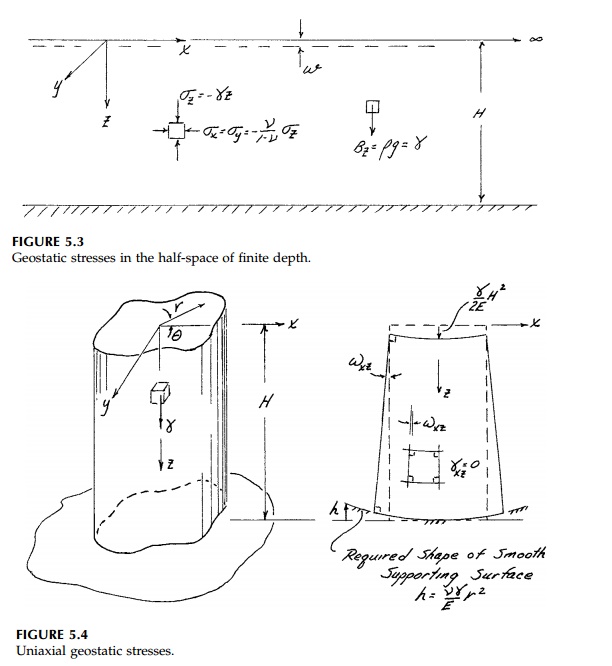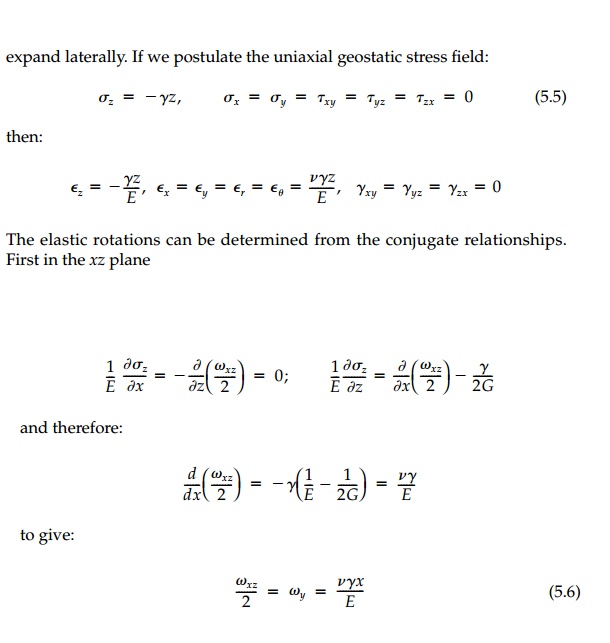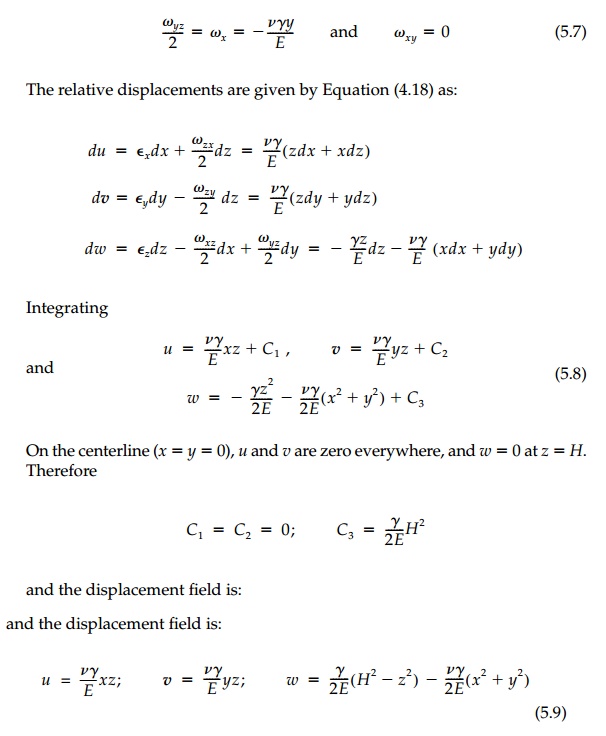Chapter: Civil : Principles of Solid Mechanics : Linear Free Fields
Geostatic Fields
Geostatic Fields
If, rather than surface
traction, self weight is the loading, geostatic fields occur. We shall see in
the next chapter that a general solution for arbitrary geometry is very
difficult (actually unknown for some simple and important cases), but for the
half-space and the uniaxial case, a solution is straightfor-ward.
Considering first the half-space where z is
again taken as the depth coordinate, vertical equilibrium and the geometric
condition that Ex =E y = 0 everywhere lead to the solution:

which, if v=1/2
, is again isotropic. Since the only variable is z, the half-space can
be considered of finite depth, H, supported on a rigid base as shown in
Figure 5.3. The vertical displacement is therefore:

Determining the support condition necessary to
achieve the linear geo-static stress field in the uniaxial case provides a
simple demonstration of the physical importance of elastic rotations and the
efficiency of determining them as a prelude to calculating the displacement
field. Consider the block shown in Figure 5.4 standing under its own self weight
and free now to


since from symmetry at x = 0, ωxz = 0 and the integration constant is zero. Similarly following the same procedure,

Thus to achieve a uniform contact pressure, â€'ÎłH,
at z = H, the supporting surface (Figure 5.4) must
be a smooth parabolic dish satisfying the displace-ment boundary condition
dictated by the required vertical displacement. If, however, the supporting
surface were flat, this geostatic solution, by St. Venant’s principle, would
still be correct some distance from the bottom since the actual distribution of
the contact stress must, by vertical equilibrium, be statically equivalent to a
uniform distribution.
Related Topics